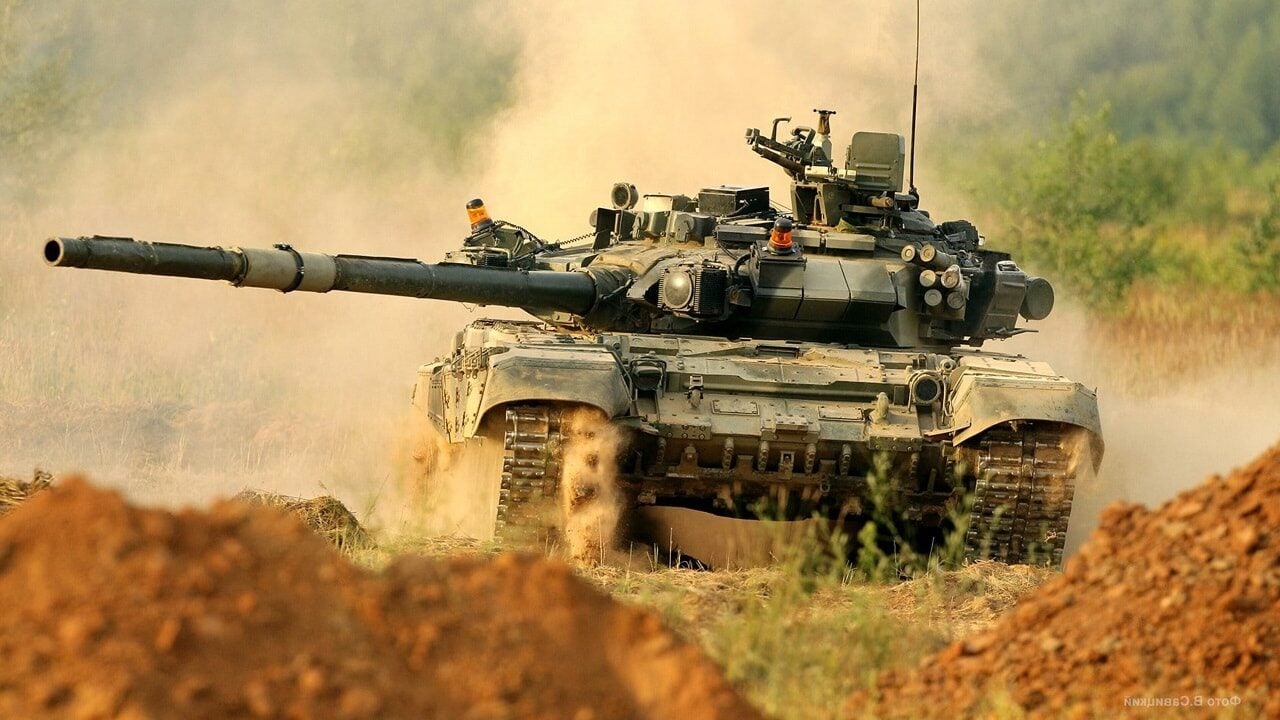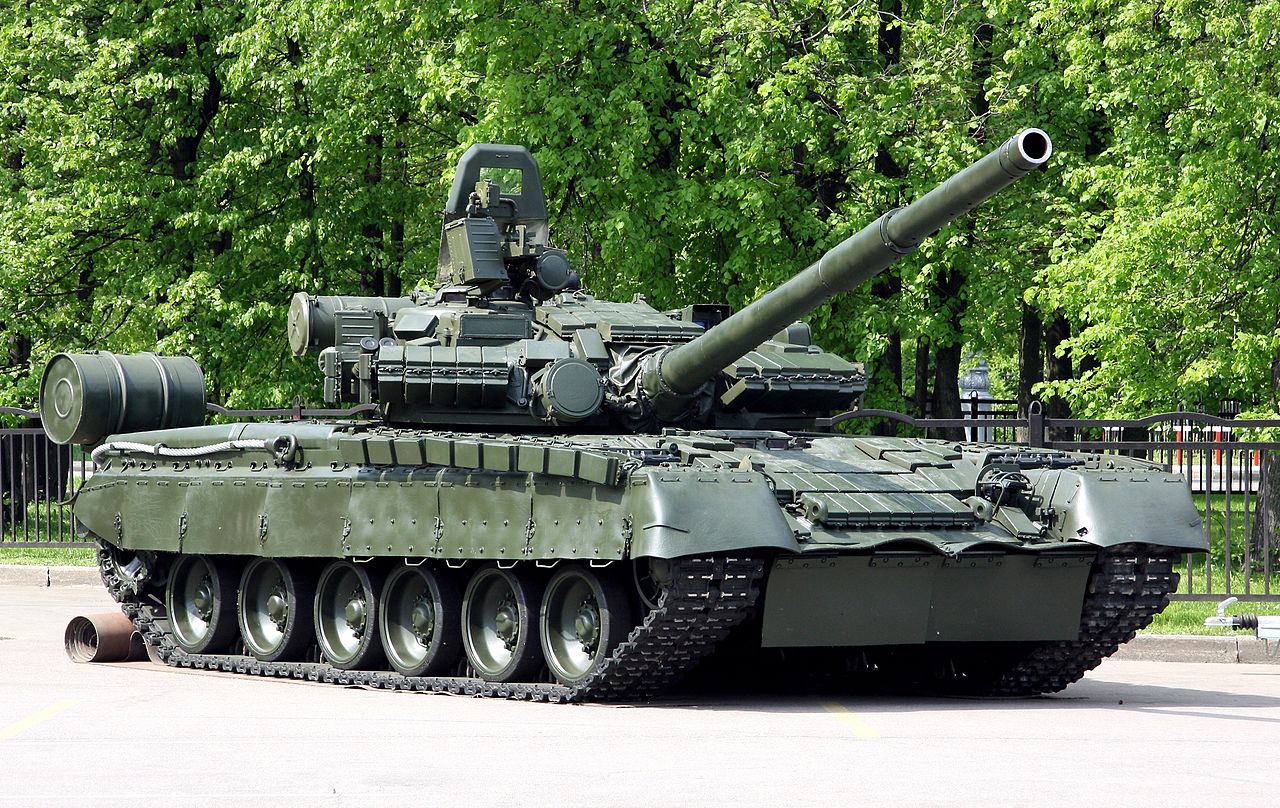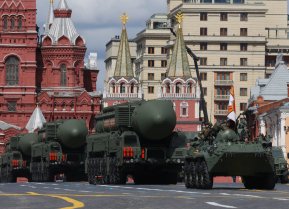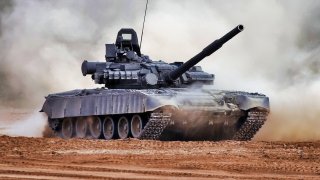Russia May Restart Production of the Old T-80 Tank: That Would Be a Mistake
In September 2023, reports circulated that Russia would resume production of its T-80 main battle tank. The Kremlin has lost a significant number of tanks in its fight with Ukraine and, as a result, has been forced to employ older models – including the T-63 and even a significant number of T-54/55 series tanks.
In September 2023, reports circulated that Russia would resume production of its T-80 main battle tank. The Kremlin has lost a significant number of tanks in its fight with Ukraine, and as a result, has been forced to employ older models – including the T-63 and even a significant number of T-54/55 series tanks.
Alexander Potapov, CEO of tank maker Uralvagonzavod, told the state-run Zvezda news outlet, "This is the task at hand, or at least the military has set it for us. And we are now actively interacting, working, exploring these issues with the Ministry of Industry and Trade, because this requires, accordingly, new capacities."
Yet, as David Axe, writing for Forbes.com, suggested there was much reason to be skeptical.
"Uralvagonzavod's factory in Omsk, in Siberia, hasn't manufactured a new T-80 hull since 1991. And while the Omsk factory might still have the 32-year-old tooling, what it probably doesn’t have is suppliers for the tens of thousands of parts it would need to assemble a new T-80," explained Axe, who also noted that while the Kremlin has done a good job of keeping a steady supply of tanks flowing to the front, the stored tanks aren't limitless.
Why the T-80 Tank?
It is also unclear why Russia would opt to produce more T-80s. Though the Russian military has taken great strides in improving the T-80, which had been designed and manufactured in the Soviet Union during the Cold War, it hasn't exactly been a game changer in the war in Ukraine.
Numerous T-80s have been destroyed by Ukrainian drones and loitering munitions.
The T-80 was actually quite advanced for its day, and when the T-80 first entered service in 1976 and was only the second MBT to be equipped with a gas turbine engineafter the Swedish Strv 103. With a crew of three, the T-80's basic configuration is similar to most Russian tanks designed before the collapse of the Soviet Union including the T-72 and T-90.
The T-80, which was the last tank developed in the Soviet Union, was actually a derivative of the T-64, while also incorporating a number of features from the T-72. In many ways, it was an evolutionary step forward, yet it was also a far more complex tank to produce, operate, and maintain. It was a more sophisticated vehicle for the era, and it used a gas turbine engine rather than the diesel engines of the T-72.

Thanks to that engine, the T-80 could reach speeds exceeding 70 km/h (45 mph), and it could warm up quickly, even in the dead of winter. The Soviet designers even referred to the improvement T-80B as "The Tank of the English Channel," as they envisioned that it could roll through Germany and make it to the English Channel in five days.
However, much like the U.S. Army's M1 Abrams, the T-80 consumed fuel at a disturbing rate. Unless the crews planned to stop at every truck stop on the Autobahn, actually reaching the English Channel would have been difficult.

As Harrison Kass of The National Interest also noted, the T-80 had many of the best attributes of the T-64, which was the first Soviet tank to have composite armor, a compact engine and transmission, and a smoothbore 125-mm gun equipped with an autoloader. The result was a heavily armored, yet light and mobile tank, weighing just 38 tons. While the T-64 had an impressive design, the tank was expensive to build.
The T-80 failed to address the shortcomings of the T-64, but the Soviets did attempt to further improve upon the design.
Enter the T-80B Tank
The T-80B variant was the first to see major improvements, and that included a new turret, laser rangefinder, and improved armor. It first entered service in 1978, and it was seven years later that the T-80BV then was introduced with additional enhancements that most notably included its reactive armor. Vast numbers of the T-80BV were in service during the collapse of the Soviet Union in 1991. Despite the large numbers produced, and the efforts to keep the ubiquitous T-80 upgraded, it was only first deployed in combat during the First Chechen War in 1994.
To say it didn't go well is a bit of an understatement, as many were destroyed in urban environments. In fact, Russia opted not to deploy the tank in 1999's Second Chechen War or the 2008 Russo-Georgian War. The T-80BV has proven to be better suited to open-ground warfare, but as noted in the recent video, Ukraine has become adept at targeting and destroying any tanks that don't take precautions.
The Devil You Know?
Prior to its unprovoked invasion of Ukraine, the Kremlin had approximately 480 T-80s of all models in active service, according to open-source intelligence. Some 3,000 additional tanks were in storage and are now being updated, and could soon be sent to Ukraine.
It is possible – even likely – that Moscow isn't actually building new T-80s, but is upgrading the old models that have spent years in storage. For the crews, it probably won't matter whether they die in a burning hulk that is four decades old or brand new.
Peter Suciu: Author Experience and Expertise
Peter Suciu is a Michigan-based writer. He has contributed to more than four dozen magazines, newspapers, and websites with over 3,200 published pieces over a twenty-year career in journalism. He regularly writes about military hardware, firearms history, cybersecurity, politics, and international affairs. Peter is also a Contributing Writer for Forbes and Clearance Jobs. You can follow him on Twitter: @PeterSuciu.
Main image is from Shutterstock. All others are Creative Commons.


